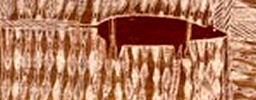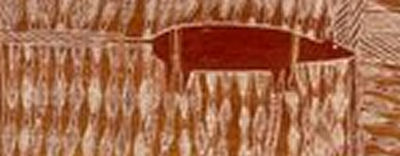 "My question is: what is gained by delisting SBBs? Will the government be able to save some money on fox and cat control and will developers receive the green light to build houses in bandicoot habitat? We certainly have not been told everything. To declare SBBs safe because in one or two areas where fox control slightly increased their numbers is absolutely ridiculous. Take that money away and see what will happen." If readers want to make their voice heard on threatened species the address is species.consultation[at]environment.gov.au
"My question is: what is gained by delisting SBBs? Will the government be able to save some money on fox and cat control and will developers receive the green light to build houses in bandicoot habitat? We certainly have not been told everything. To declare SBBs safe because in one or two areas where fox control slightly increased their numbers is absolutely ridiculous. Take that money away and see what will happen." If readers want to make their voice heard on threatened species the address is species.consultation[at]environment.gov.au

The Director
Marine and Freshwater Species Conservation Section
Wildlife, Heritage and Marine Division
Department of the Environment
PO Box 787
Canberra ACT 2601
Re: Delisting of the Southern Brown Bandicoot
I have been involved with Southern Brown Bandicoots (SBB) for more than 40 years. I live in Frankston where I remember finding SBBs all over the Mornington Peninsula, in the Frankston area and especially in the Pines Flora and Fauna Reserve where they were recognised as the largest and strongest colony in the region. Sadly, I have observed them gradually disappearing from all of these areas and in many of these places they have become extinct.
How could this be allowed to happen? Since 2001, when the species was put on the endangered list, a SBB recovery group was established and SBBs were selected as the flagship species in the Western Port Biosphere Reserve so that they would receive special attention. At least five major workshops were held involving hundreds of people, among them many scientists, government agencies, private consultants and landholders. In addition, countless meetings of the SBB recovery team were held at many different places. During the same time the Victorian government created strategy after strategy for the recovery and protection of them but so far, none of them work.
Sadly, no SBBs or habitat areas were recovered anywhere in this region. At the Pines, where some SBBs were still remaining, at least $120,000 was spent on fox and cat control. It was unsuccessful and the last SBBs were lost as well. It is now high time to admit to the grand failure in protecting this species especially in this region.
As for my understanding, SBBs are not a corridor living species by nature and need to be provided with habitat in large reserves as is the case at the Royal Botanic Gardens Cranbourne and can be in the Pines Reserve, Briars Park in Mt Martha and several other reserves that are surrounded by a predator-proof fence. We desperately need some insurance colonies before we gamble with the rest that still survive in the wild.
If not, and if this current scenario goes on much longer, we will soon reach the point where the species will come down in numbers as the Eastern Barred Bandicoot did when, at the lowest stage, only 50 animals survived and where captive breeding had to prevent them from becoming totally extinct on the mainland. Even after some numbers were increased, the government managed to make some huge blunders with them (long story). Why have we not learned from this?
My question is: what is gained by delisting SBBs? Will the government be able to save some money on fox and cat control and will developers receive the green light to build houses in bandicoot habitat? We certainly have not been told everything. To declare SBBs safe because in one or two areas where fox control slightly increased their numbers is absolutely ridiculous. Take that money away and see what will happen.
Hans Brunner
M. App. Sc. Deakin University

Comments
Hilaire (not verified)
Sat, 2015-02-28 21:33
Permalink
Message to Wildlife carers in Victoria
Add comment